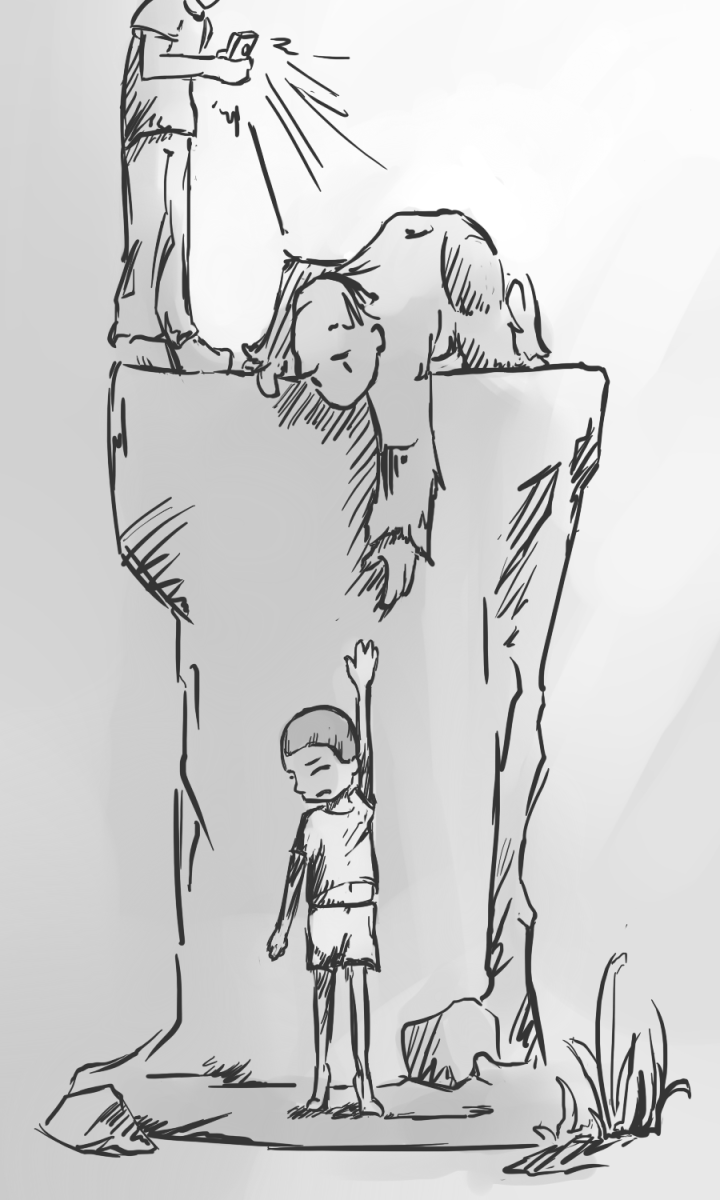Protecting western lowland gorillas in wild best way to honor Harambe’s memory, come to terms with controversial shooting
When Harambe, a western lowland gorilla, was shot about a week ago at the Cincinnati Zoo and Botanical Gardens to save a toddler who’d fallen into his moat, I immediately joined the side of the debate that was enraged at the gorilla’s death.
Despite watching the footage of the 17-year-old gorilla dragging the 3-year-old boy around the pool in his enclosure multiple times, I somehow still felt it was unfair for the gorilla to die.
I instantly clung onto witness reports stating the boy had been repeatedly claiming he’d go into the enclosure, and as soon as his mother’s attention was diverted, he did just that. I was angry the mother hadn’t led her son elsewhere if she’d noticed he was restless about entering the exhibit.
Another account said, even though the mother’s attention was lost for only a matter of seconds, the child managed to climb over the seemingly secure barrier, which would’ve required some time and effort on his part. I began speculating about just how long the parent wasn’t alert and started to look into whether the zoo was following the regulations for animal enclosures.
No matter which way I looked at it, I blamed the humans involved and mourned the loss of a stunning animal due to human negligence.
I think part of the reason I felt so sorry for Harambe was because he died in a scenario that was completely out of his control. He didn’t have a say in the fact that he’d been born and raised in captivity. He’d just been in the wrong place — a place he didn’t belong — at the wrong time.
No matter how long a wild animal is under human care, it can never fully be domesticated, and its natural instincts will prevail. Harambe had to deal with an unannounced visitor and, despite interacting with zoo personnel on a daily basis, was startled by the child’s unexpected presence.
Harambe and his endangered species belong in the wild, not in a bounded space to serve as entertainment for humans, who could potentially put their lives in danger. Even though I pointed fingers and took sides when I first heard about Harambe’s passing, I realized putting the blame on one party or the other wasn’t the right way to commemorate the beautiful creature we’d lost.
I found out Harambe’s name meant “working together, caring and sharing” in Swahili. His death definitely brought people together, whether it was to argue about the circumstances of it or to mourn his passing. But the “caring” aspect of his name’s meaning was only apparent when the Harambe Fund was started at the Gladys Porter Zoo in Brownsville, TX.
The crowd-funding campaign is raising money for a research project to learn more about and to protect western lowland gorillas in Africa’s Congo Basin. The Cincinnati Zoo is also continuing its $12 million improvement to the gorilla exhibit to “help tell the story of wildlife in the wild … and what it takes to protect them in the future,” said Thane Maynard, the zoo’s director.
These efforts will not only pay respect to Harambe in the best way possible, but will also turn the discussion to broader, more impactful topics than who was responsible for the gorilla’s death. Not only will Harambe be remembered, but the value of the remaining western lowland gorillas will be brought to light.






